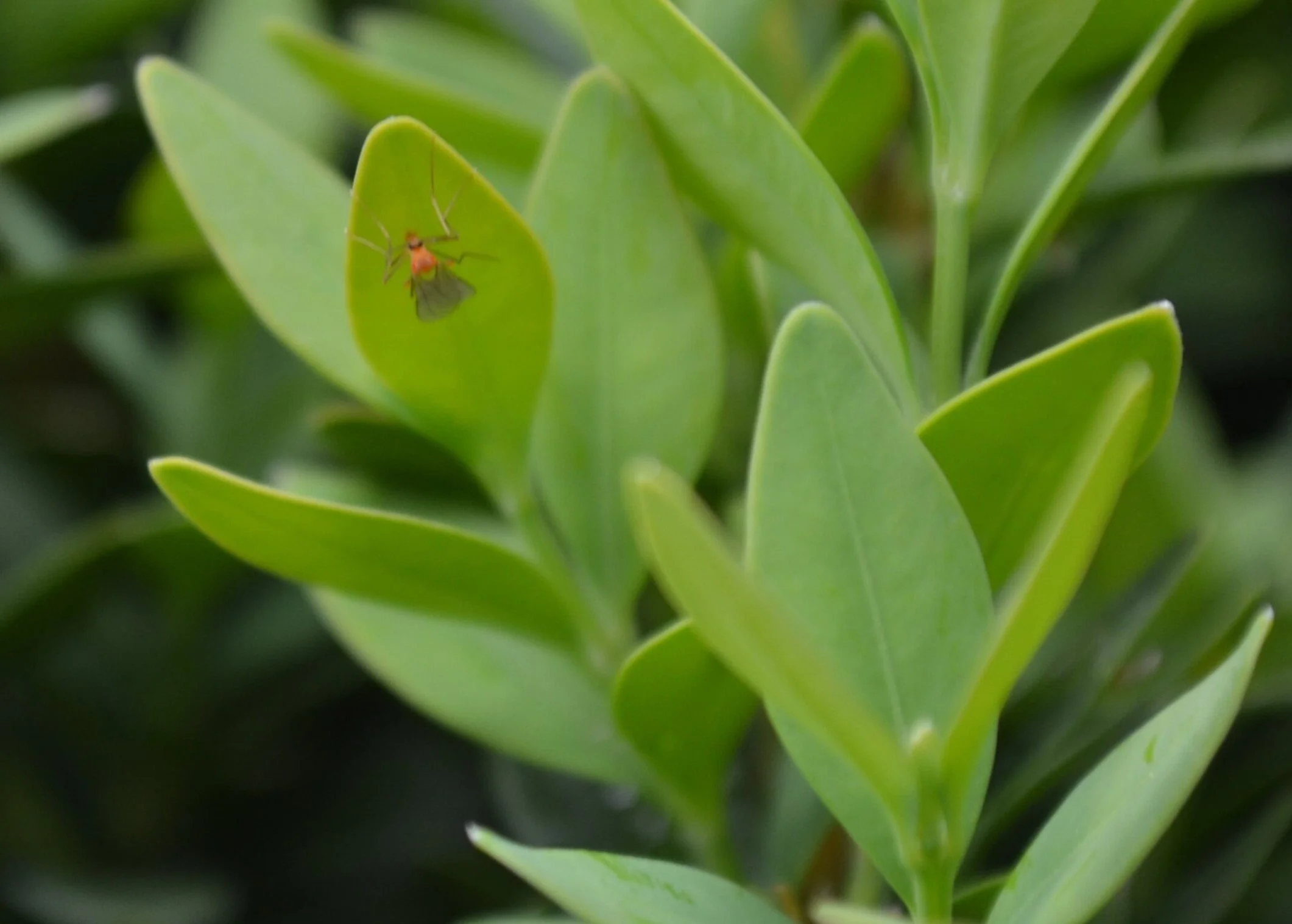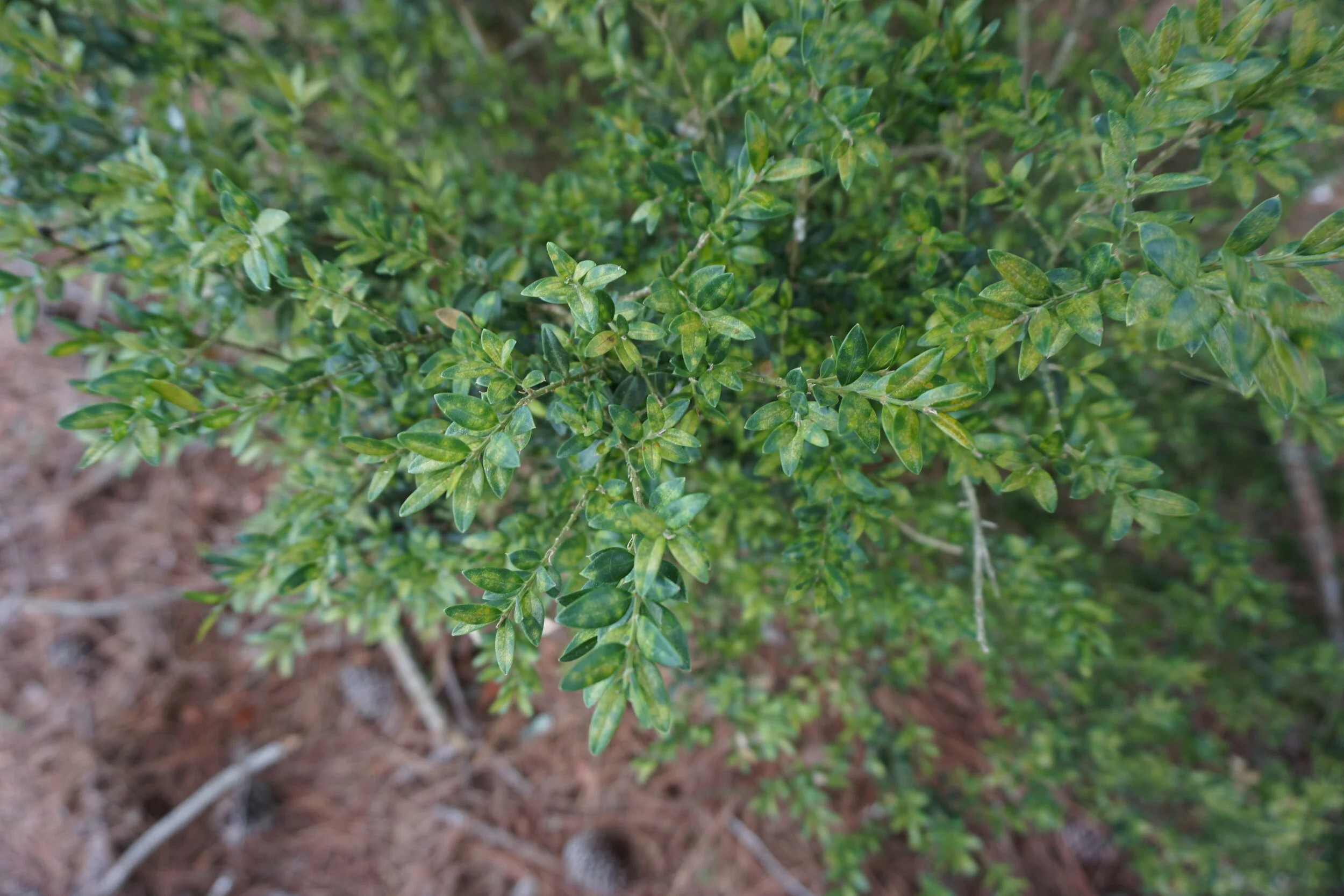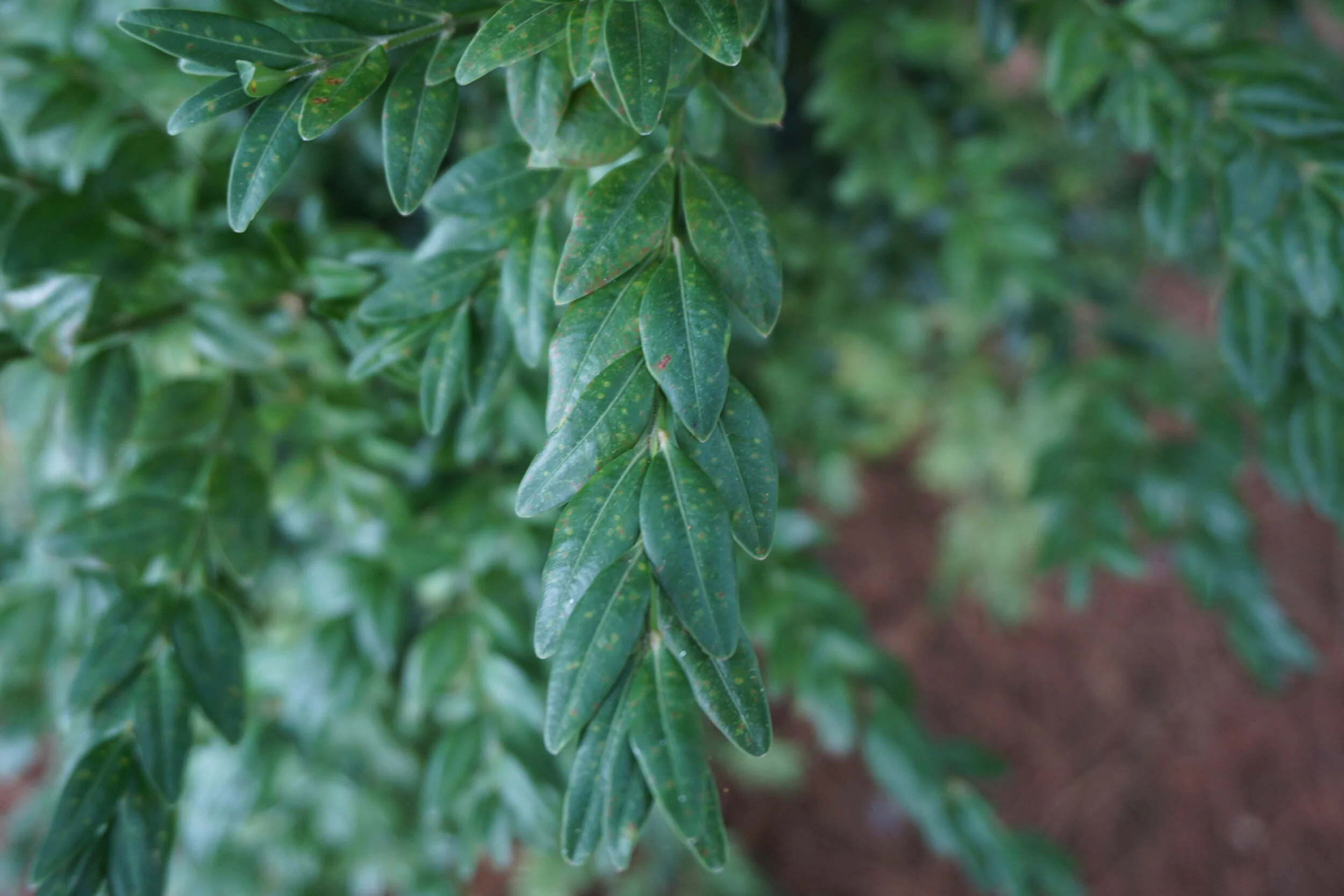Boxwood Leafminer
(Monarthropalpus flavus syn. Monarthropalpus buxi)
The Boxwood Leafminer is the most damaging insect pest to boxwood in the Mid-Atlantic area of the United States. Technically not a leafminer, but a midge, this pest causes blisters and defoliation that can be quite an eyesore for a boxwood enthusiast. Over a period of several years, a lightly infested plant can become discolored, yellowish-brown, and even defoliate. In rare occasions, severe Boxwood Leafminer populations can kill boxwood. The good news about Boxwood Leafminer is that there are effective control options and those options are simple because there is only one generation of the pest per year.
Following is an in-depth discussion of the insect, including prevention and control, chemical applications, and the future of boxwood.
Scroll down or click the images below for details.
Understanding Boxwood Leafminer
Click image to enlarge.
Devastating Insect pest for boxwood.
One life cycle per year, making chemical control relatively easy.
Contact insecticides targeting adults can be used during hatch but are seldom effective.
Systemic insecticides are most effective when targeting small larvae in mid-summer through fall.
For new plantings, select cultivars that are more resistant to Boxwood Leafminer.
Adults emerge in mid-spring and hover close to the boxwood plants. Note the white pupal cases attached to the leaves. These are a clear sign of emerging adults.
The Boxwood Leafminer tends to have the heaviest populations in the United States in zones 6-8. The populations seem to be much lighter in zones 4 and colder, as it is believed that the larvae have trouble surviving through the winter in locations with extremely cold temperatures.
The degree of the infestation of Boxwood Leafminer is dependent upon the cultivar. In recent years, the emergence of the varieties Buxus x ‘Green Velvet’, Buxus x ‘Green Beauty’, Buxus x ‘Green Mountain’, and Buxus sempervirens ‘Justin Brouwer’ have increased the awareness of this pest as these popular cultivars are extremely susceptible.
Adult Boxwood Leafminers emerge over a two to three-week period (depending on temperature) in late April to early May in Virginia. To the naked eye, the adult Boxwood Leafminers appears to be a tan or orange gnat-like fly, resembling a small mosquito. The adults live only a week or two and are very weak flyers, generally hovering within inches of a boxwood so that the wind will not blow them away. The adults mate and the female lays eggs in the tender underside of the leaves of the current year’s new growth.
Small blisters, visible on the underside of the leaves, show early larvae growth.
The eggs hatch in early summer, around mid to late June in central Virginia. The larvae begin a 9-10 month cycle during which they feed and live inside the leaf, causing it to blister. The blistering is most evident in winter to early spring of the following year as the growing larvae create pimple-like bumps on the leaves. Depending on the degree of infestation, a leaf can contain as many as 10 or more larvae. In the spring, larvae pupate around late April and the adults emerge from the leaf, fly away, and begin a new cycle.
Identifying and Diagnosing Boxwood Leafminer
Preventing Boxwood Leafminer
When planting new boxwood, the best strategy is to plant cultivars that are genetically more resistant to the Boxwood Leafminer. Susceptibility of boxwood varieties to Boxwood Leafminer is cultivar-specific. Some boxwood show absolutely no damage at all when subjected to heavy populations of Boxwood Leafminer. Other cultivars show extreme susceptibility. Saunders Genetics has researched more than 150 cultivars of boxwood over the years and have catalogued susceptibility. In the long-term, nurseries and gardeners do not want to spray for insects and diseases. If they plant the right cultivars, they will not have to! The chart below lists common cultivars and their susceptibility to Boxwood Leafminer.
Pictured: Bob Dunn, a researcher with Saunders Genetics looked at over 150 cultivars of boxwood for their Boxwood Leafminer resistance by dissecting thousands of leaves and counting larvae.
Click image to enlarge.
A New Generation of Boxwood:
Astute nurseries and gardeners should consider many factors when choosing a boxwood cultivar. Genetic resistance of a cultivar to Boxwood Leafminer would help to minimize any harmful effects of pesticides to the environment, because these sprays would not be needed. Therefore, one of the primary criteria for boxwood to be selected into the NewGen® family is their genetic resistance to Boxwood Leafminer. With two cultivars already selected, NewGen® will continue to research genetic resistance to insects and diseases in their quest to find an artist’s palette of boxwood to fit all needs of beautiful boxwood gardens.
NewGen Independence®
NewGen Freedom®
Click the buttons above for information on controlling boxwood leafminer.






















